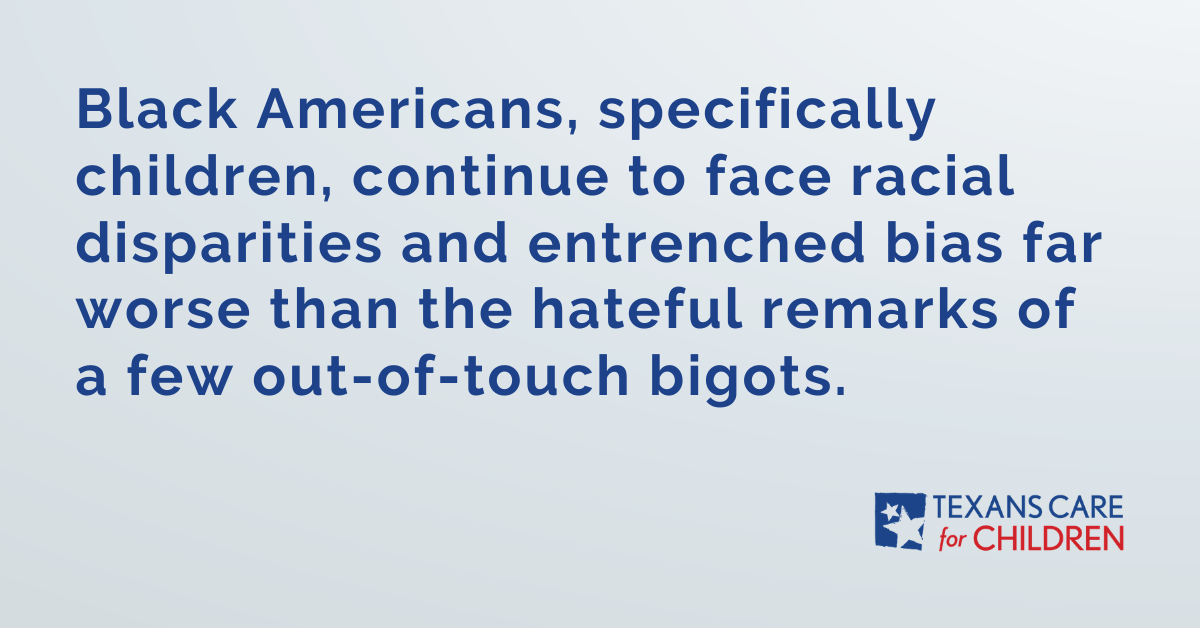This commentary appeared in the Austin American-Statesman.
The past few weeks have given us powerful reminders of the racism that persists in America. It’s not just the ugly, ignorant comments by a basketball team owner and disgruntled Nevada rancher, although they certainly deserved the criticism they received.
A pile of new studies in recent months shows that black Americans, specifically children, continue to face racial disparities and entrenched bias far worse than the hateful remarks of a few out-of-touch bigots. Fortunately, there are steps that Texans can take to increase racial equality in our state.
The American Psychological Association published research showing that black children are more likely to be perceived as older and guiltier than other kids. Sadly, people think black kids as young as 10 just don’t look as innocent as white kids.
Then, a study by Nextions provided the latest confirmation that Americans judge blacks more harshly when reviewing their performance. Law partners gave identical legal briefs lower marks, and found more errors, when they were told that the author was black.
A report by the U.S. Department of Education reveals that black students — even in preschool — in public school face harsher school discipline than other students.
But there’s no evidence that their behavior is worse. According to a 2011 Council of State Governments report, Texas schools punish black kids much more severely, but only when administrators and teachers have individual discretion.
What’s behind the unequal treatment documented in these studies? While we’d like to point the finger at a few deeply bigoted people, the truth is that over the course of our lives we have all internalized racial biases, no matter how well intentioned we are.
These often invisible biases have serious consequences for children. Kids who get into trouble at school, for example, often end up on a path that leads to the juvenile justice system, a stunted education, and a life of unrealized potential.
These challenges can sound daunting, but there are ways they can be addressed. Local and state leaders can start by considering how much of the design of their programs and policies leave unchecked the biases we all carry with us. Education leaders, for instance, should identify schools that disproportionally punish children of color, and require a plan for improvement.
The state’s Center for Elimination of Disproportionality and Disparities has developed a model for agencies to use in these efforts. It includes a focus on data, a culturally competent workforce, community engagement, and other proven strategies.
Child Protective Services has used the model to make progress on its disproportionality problems, although the state agency and the Legislature have more work to do. Data show that when CPS determines a black family has the same risk level as a similar white family, the agency is still more likely to remove the black children from the home and less likely to provide family preservation services. As it tackles these problems, CPS has also demonstrated that improvements made to address inequities end up improving services and outcomes for all children in the system.
If we acknowledge the persistent biases and inequalities that children face, and commit to work towards their elimination, we can make Texas a better place for all of us.
Peter Clark is the communications director for Texans Care for Children.


